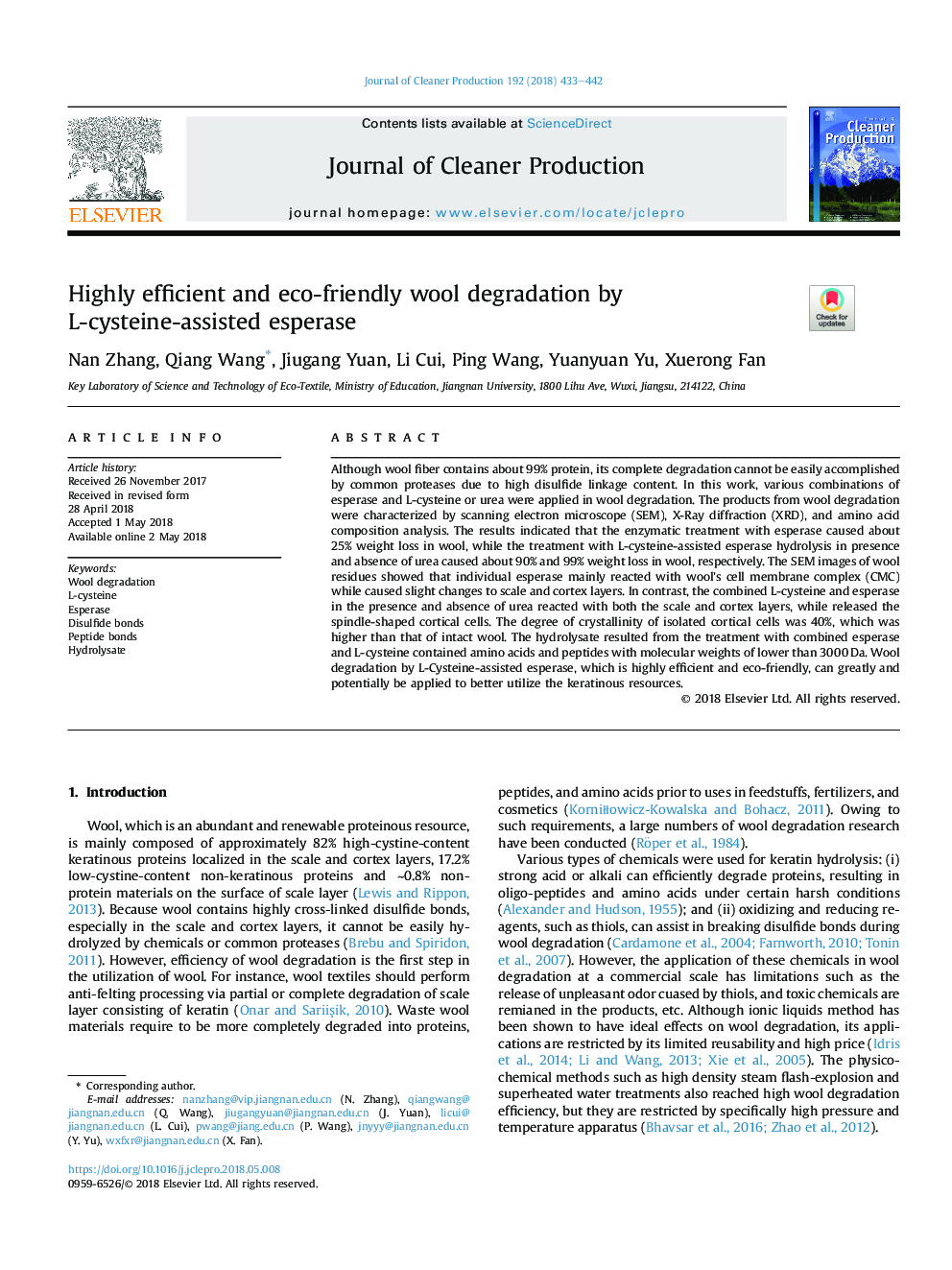| Article ID | Journal | Published Year | Pages | File Type |
|---|---|---|---|---|
| 8094582 | Journal of Cleaner Production | 2018 | 10 Pages |
Abstract
Although wool fiber contains about 99% protein, its complete degradation cannot be easily accomplished by common proteases due to high disulfide linkage content. In this work, various combinations of esperase and L-cysteine or urea were applied in wool degradation. The products from wool degradation were characterized by scanning electron microscope (SEM), X-Ray diffraction (XRD), and amino acid composition analysis. The results indicated that the enzymatic treatment with esperase caused about 25% weight loss in wool, while the treatment with L-cysteine-assisted esperase hydrolysis in presence and absence of urea caused about 90% and 99% weight loss in wool, respectively. The SEM images of wool residues showed that individual esperase mainly reacted with wool's cell membrane complex (CMC) while caused slight changes to scale and cortex layers. In contrast, the combined L-cysteine and esperase in the presence and absence of urea reacted with both the scale and cortex layers, while released the spindle-shaped cortical cells. The degree of crystallinity of isolated cortical cells was 40%, which was higher than that of intact wool. The hydrolysate resulted from the treatment with combined esperase and L-cysteine contained amino acids and peptides with molecular weights of lower than 3000â¯Da. Wool degradation by L-Cysteine-assisted esperase, which is highly efficient and eco-friendly, can greatly and potentially be applied to better utilize the keratinous resources.
Related Topics
Physical Sciences and Engineering
Energy
Renewable Energy, Sustainability and the Environment
Authors
Nan Zhang, Qiang Wang, Jiugang Yuan, Li Cui, Ping Wang, Yuanyuan Yu, Xuerong Fan,
